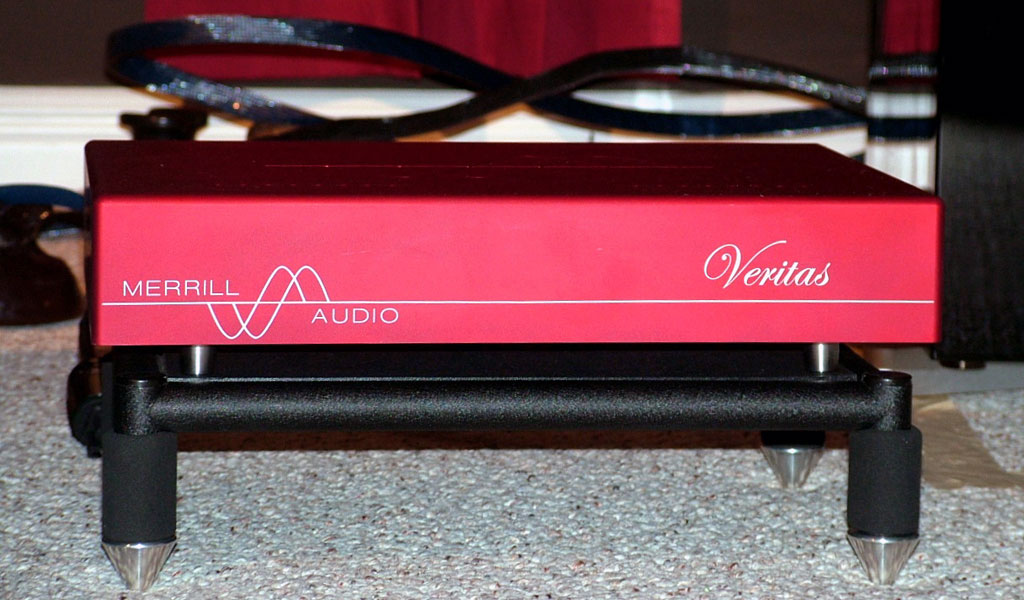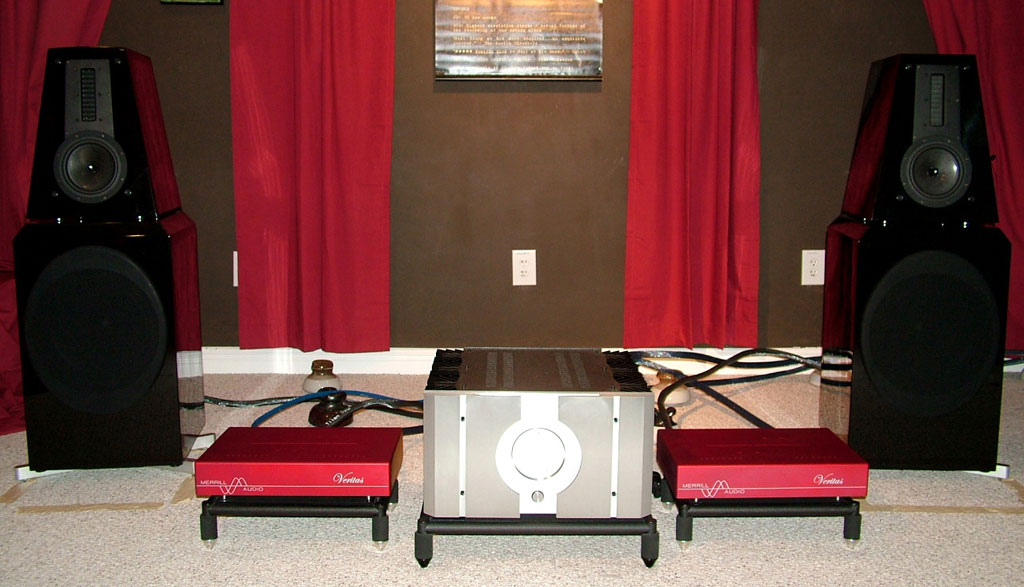I was first introduced to the offerings of Merrill Audio by Laurence Borden, our Executive Editor. He learned of the Veritas amplifiers at an audiophile gathering in his neck of the woods somewhere in New Jersey, and then had a chance to hear them in his own system. Apparently, the amplifiers made enough of an impression for him to inquire about obtaining a pair of the monoblocks for review by Dagogo. Once the cattle call came through, I jumped at the chance since they offered another unique opportunity to experience high quality digital amplifier, this time in the form of high powered monoblocks.
A subsequent conversation with owner and designer Merrill Wettasinghe revealed that Merrill Audio has been in business since 2010. It was borne out of a passion for audio and the desire to have an audiophile-quality passive preamplifier that could be utilized in systems with a digital- only front-end. Armed with a BSEE, an MBA, an international career in R&D and Marketing at Hewlett Packard, and a need to jump off the living-out-of-a-suitcase corporate lifestyle and start a family, the decision for Merrill to pursue this lifelong passion came instinctively.
Merrill’s custom building pursuits quickly became focused on the world of amplification, digital amplification. As a dyed-in-the-wool audiophile, this may seem like an odd choice but he perceived a gap and an opportunity to build a true audiophile offering with this topology.
After much R&D, testing, and acceptance testing which included many audiophile auditions, the Veritas line of amplifiers came to fruition. This includes the dual mono Merrill Audio Veritas Twin ($10,000), the Veritas monoblock ($12,000/pr), and lastly the Veritas Siamese Twin monoblock with twice the headroom of the standard Veritas Monoblock ($20,000/pr.). The Veritas monoblocks are the subject of this review.
The Veritas monoblock amplifier is a class D amplifier that is designed around the Hypex NCore NC1200 power modules. These were developed by the talented Bruno Putzey at Hypex Electronics. Yea, I know, I know, “Class D” — you are probably already thinking about moving on to the next article. However, do yourself a favor and don’t! As I was explaining, the Merrill Audio Veritas monoblocks are indeed Class D switching amplifiers. However, the industrial design and attention to audiophile detail are like no other I have encountered in amplifiers of this type. For example, each amplifier chassis is machined from a solid block of aluminum with the outer walls of the unit remaining a full one-inch thick. The major components of the amplifier are housed in isolated machined chambers within the aluminum block to optimize isolation characteristics and assure low noise operation; in essence, similar principles utilized in the construction of the Merrill-Williams R.E.A.L. 101 turntable plinth. All wiring is point-to-point and Cardas ultrapure copper Litz wire is used throughout; input wiring is double shielded ERS Cardas 23 gauge Litz and the output wiring is a robust Cardas 11 AWG Litz. These output wires are direct connected to Cardas Speaker Binding posts that utilize solid copper posts and a Rhodium plate for the best possible connection to spades. The inputs are fully balanced and utilize Cardas XLR connectors; these are old-plated full metal jackets with rhodium plated silver pins, for maximum connectivity and life. The circuit layout is optimized to assure the shortest connections possible in order to preserve the sonic quality of the signal.
The Veritas monoblocks are a differential balanced design with both input signals floating, utilizing the aforementioned Hypex Ncore NC1200. This is said to result in quiet, low noise operation which also minimizes ground loops. The IEC is a gold-plated Furutech receptacle that connects to a custom designed Triode Wire Labs aftermarket power cord, which came with each amplifier.
I include all of this information regarding design and construction in an effort to highlight emphasize, and set your minds at ease, that the Merrill Audio Veritas is not your usual value- priced Class D amplifier with pseudo-high-end aspirations.
- (Page 1 of 3)
- Next page →



Great review. The testament is that you bought them for your stats.
Do the stats allow single amp, or is biamp required?